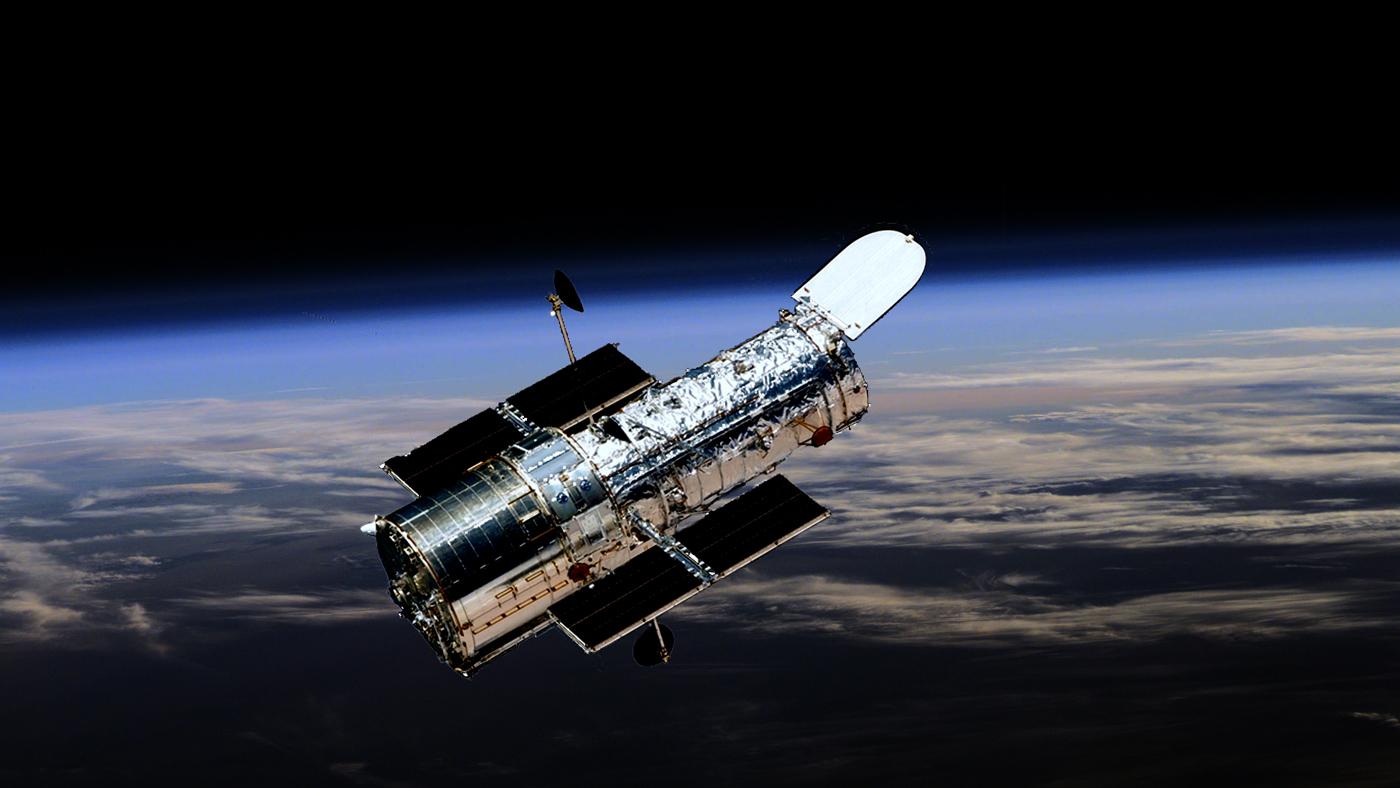
It was never the world’s biggest telescope, and it can’t see as far as some. But for the public, the Hubble Space Telescope is undoubtedly the most famous astronomical instrument ever.
True, most people couldn’t tell you the first thing about Edwin Hubble. But all have seen the spectacular photos made with his optical namesake. It’s plausible to claim that this orbiting spyglass has done as much to spur interest in science as to reveal the secrets of the cosmos.
Still, the now-famous telescope’s first months were inauspicious. On April 26, 1990 it was gently set into orbit from the cargo bay of the space shuttle Discovery. For the next few weeks, it underwent equipment checks and efforts to refine the focus. By late May, preliminary photos showed that the imagery was about twice as sharp as any ground-based telescopes. That may sound cheery, but in fact fell far short of expectations.
Something was wrong. For days HST scientists futzed around trying to sharpen the pictures made by the 300-mile high instrument. Then one morning as I sat at a desk at the State University of Groningen, a fellow astronomer charged into the office shouting “Hubble is [expletive]!”
Bad news, and soon the astronomical community realized that the 95-inch primary mirror had an optical defect known as spherical aberration – the surface was wrongly shaped. Of course you couldn’t tell by looking at it: The error amounted to two percent the width of a human hair.
Overnight, NASA’s premier astronomical instrument, decades in the making, became an embarrassment and a joke. In the satiric 1991 movie Naked Gun 2-1/2, a photo of the HST could be seen hanging on the wall of the “Loser’s Bar” alongside pictures of the Edsel, the airship Hindenburg, and other notable debacles. A low point.
Making repairs
By the end of 1993, space shuttle astronauts taking part in the first Hubble servicing mission had installed a device made by the Ball Aerospace Corporation called COSTAR (a shorter way to say Corrective Optics Space Telescope Axial Replacement.) It was described at the time as “contact lenses” for Hubble. In addition, a separate instrument, the Wide Field Planetary Camera 2, was installed. There was no simple contact lens fix for this, Hubble’s principal imaging device. The shuttle astronauts replaced it with a new model the size of a workbench, quickly constructed at the Jet Propulsion Laboratory.
SETI Institute astronomer Bill Sparks was part of the team waiting to see what WFPC2 would do as 1994 began. Staring at screens in HST’s Baltimore headquarters, he and the crowd held its collective breath as the first image from the refitted telescope came up.
“It had nothing in it,” recalls Sparks. “My mind was racing: ‘I checked that a thousand times’ I thought. But before I fainted away, the correct image appeared on the screen, and it was one of those OMG moments. It was sharp and detailed.”
“In the blink of an eye, the world changed, and we knew this was special. That picture was on the cover of Timemagazine, and since then Hubble images have become part of everyday life.” Most of the famous ones were made with the replacement WFPC.
The HST was intended to do cosmology research; to measure how fast the universe is expanding and investigate how galaxies form. It did that work of course, but as with all new astronomical instruments its greatest triumphs were discovering the unexpected – such as evidence that the cosmos is suffused with dark energy.
The drumbeat of Hubble’s triumphs has been incessant, not because the telescope is large, but because – despite its unlucky beginnings – it’s sharp. Earth’s turbulent atmosphere inevitably blurs the images made with any instrument on the ground, even if that ground is high up on a mountain. Hubble’s vision is typically ten times better than its terrestrial brethren. What it lacks in aperture, it makes up in location.
Thirty years later, Hubble, slightly hamstrung by the aging gyroscopes that stabilize its pointing, is still doing top-drawer science. It’s likely to continue to delight astronomers and the public for another decade or two. But a year from now, its successor – the James Webb Space Telescope – will be boosted into high orbit. Unlike Hubble, the JWST will operate at infrared wavelengths. This will permit it to more effectively look to greater distance (the expansion of the universe shifts all light and radio to longer wavelengths) and probe the universe’s early history.
Yes, JWST will be more sensitive and in many ways more ambitious than its forebear. But Hubble will always have the right of progenitor. It is one of science’s immortals.





